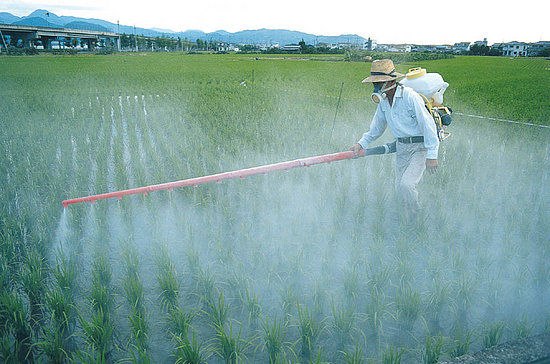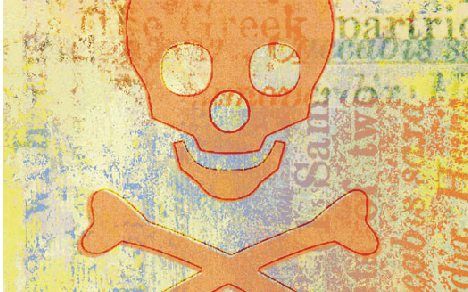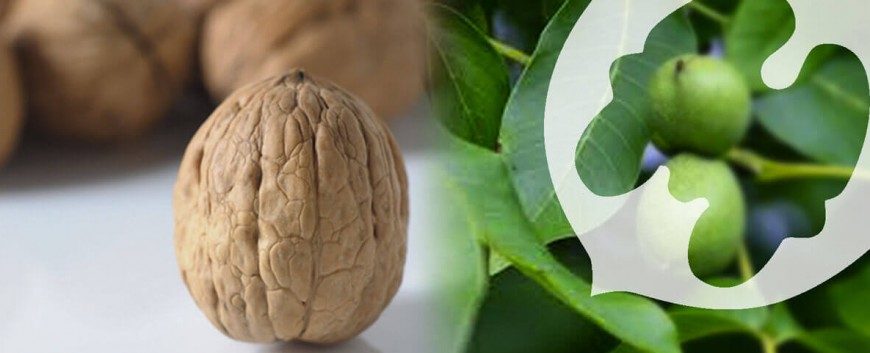It’s that time again! Each year, the Environmental Working Group releases a list of the most pesticide-covered fruits and veggies in the supermarkets.
They did this in 2010 and 2011, and the newest list is available now.
But before I share it, I want to point out: if you do not have access to some of these items in an organic form, does that mean you should avoid it?
NO!
If you can buy organic, I highly recommend it. If you store does not sell organic, ask them about it. If the store sees enough customers desiring this healthier choice, they just may begin to stock it. Vote with your dollars, my friends!
But if you don’t have the option to buy organic, still load up your fruits and veggies! We are daily bombarded with toxins from the foods we eat (meat, dairy, grains, fats, canned foods, etc… they may all have traces), the water we drink, the air we breathe, the chemicals we use to clean our homes, the cosmetics we put on our skin, and more… but you body CAN eliminate those if you try to minimize those intakes, and maximize your detoxification-promoting foods: fresh fruits and vegetables are some of the best for that!
Why are pesticides bad?
These are dangerous chemical that store in the fat cells of your body, they may affect the brain, the nervous system, and many other parts of the human body. The Environmental Protection Agency shares, “The health effects of pesticides depend on the type of pesticide. Some, such as the organophosphates and carbamates, affect the nervous system. Others may irritate the skin or eyes. Some pesticides may be carcinogens [cancer causing]. Others may affect the hormone or endocrine system in the body“
So this time the list is the DIRTY DOZEN PLUS, because the last two items on the list contain these dangerous organophosphates; which are of a different group of toxins, but equally important to be aware of.
“Organophosphate pesticides are of special concern since they are associated with neurodevelopmental effects in children,” said EWG toxicologist Johanna Congleton. “Infants in particular should avoid exposure to these pesticides since they are more susceptible to the effects of chemical insult than adults.”
Other notable findings:
- Some 98 percent of conventional apples have detectable levels of pesticides.
- Domestic blueberries tested positive for 42 different pesticide residues.
- Seventy-eight different pesticides were found on lettuce samples.
- Every single nectarine USDA tested had measurable pesticide residues.
- As a category, grapes have more types of pesticides than any other fruit, with 64 different chemicals.
- Thirteen different pesticides were measured on a single sample each of celery and strawberries.

And chemicals may be in the water, too:
“In 2010 USDA analyzed samples from 12 community drinking water systems that use surface water such as reservoirs, lakes and rivers as their water sources. Tests of 284 samples taken after treatment detected 65 pesticides or their metabolites. The toxic herbicide atrazine or its metabolites were found in every single sample. The herbicides 2,4-D and metolachlor were detected in more than 70 percent of the samples. Six other pesticides were found in at least half the samples.”
Because of it’s contamination of the groundwater, the European Union banned Atrazine in 2004. However, for foods grown in the US, atrazine is still one of the most widely used herbicides. Despite restrictions that used to be in place, about 76 million pounds were applied last year.

So back to the fruits and veggies: Always wash your produce thoroughly! And if you buy from a local farmer, ask them about their growing practices! Some may not use chemicals, but not be certified “organic” because of the cost of certification. Some may not want to pay for chemicals. But others may import cheaper, even more dangerous chemicals from other counties that don’t have the same limits as the US. So greet your grower and know how they grow what they grow! ![]()
Without further ado, here is the newest list for the DIRTY DOZEN (the foods with the most pesticides, so try to go organic if you can) and the CLEAN FIFTEEN (those with the least, so feel free to buy these as non-organics as much as you want!)
DIRTY DOZEN
1. Apples
2. Celery
3. Sweet Bell Peppers
4. Peaches
5. Strawberries
6. Nectarines (imported)
7. Grapes
8. Spinach
9. Lettuce
10. Cucumbers
11. Blueberries (domestic)
12. Potatoes
PLUS (those with Organophosphate pesticides)
1. Green Beans
2. Kale/Leafy Greens
CLEAN FIFTEEN
1. Onions
2. Sweet Corn
3. Pineapple
4. Avocado
5. Cabbage
6. Sweet Peas
7. Asparagus
8. Mango
9. Eggplant
10. Kiwi
11. Cantaloup (domestic)
12. Sweet Potatoes
13. Grapefruit
14. Watermelon
15. Mushrooms
For more information on pesticides in produce, check out this video: Ripe for Change
